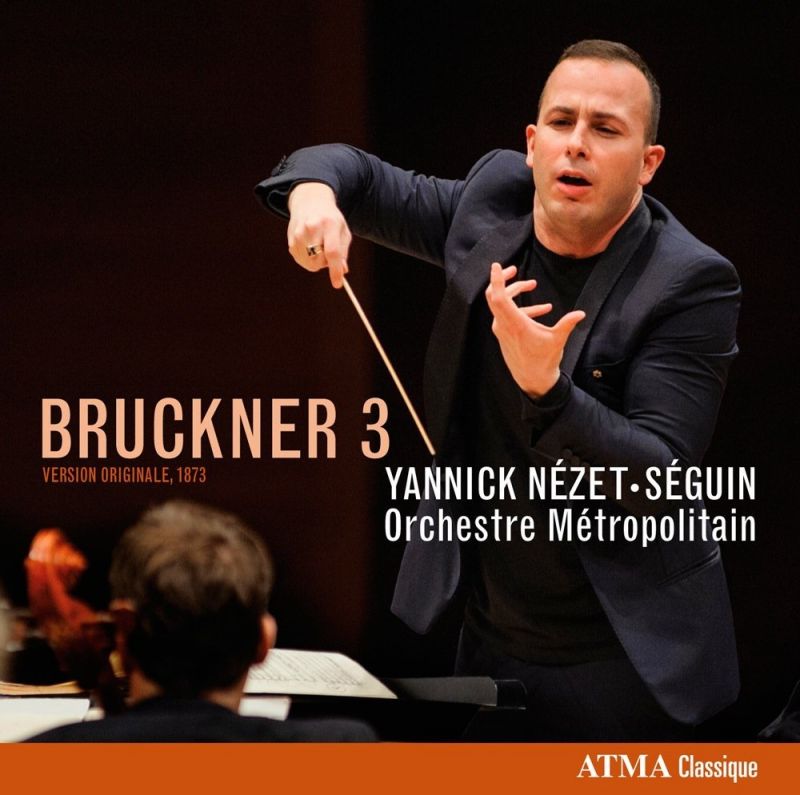BRUCKNER Symphony No 3
View record and artist detailsRecord and Artist Details
Composer or Director: Anton Bruckner
Genre:
Orchestral
Label: ATMA
Magazine Review Date: 03/2015
Media Format: CD or Download
Media Runtime: 67
Mastering:
DDD
Catalogue Number: ACD2 2700

Tracks:
| Composition | Artist Credit |
|---|---|
| Symphony No. 3 |
Anton Bruckner, Composer
Anton Bruckner, Composer Orchestre Métropolitain Yannick Nézet-Séguin, Conductor |
Author: Philip Clark
Or perhaps he tries too hard. There is much to enjoy about the opening movement. The internal balance of the Orchestre Métropolitain strings, as those obsessive imitative quavers loop the loop, blends like porous clay, momentum accruing that flings Nézet-Séguin towards the first climactic tutti fanfare. Expedient dynamic control comes as standard: true piano leans towards truer pianissimo in the answering string phrase; and, when the opening material reappears, the structure, you think, locks into place.
The finale, too, achieves a flying start, but in both cases, just as Nézet-Séguin hits cruising altitude, structural turbulence makes you wish he’d kept his seatbelt on. Georg Tintner with the RSNO excels at expressing the finale’s internal contradiction: a movement that proudly displays the time-bomb seeds of its own structural fragmentation as it hurtles forwards. But as Bruckner collapses the structure, Nézet-Séguin’s flow becomes awkwardly lumpen as he tries with grim determination to shape the material. Peter Quantrill, in his review of Nézet-Séguin’s Bruckner Eighth (5/10), likened progress to being walked around a Stations of the Cross inside a cathedral of sound; but now your ears stumble over untidy blocks of falling masonry. The slow movement is rudderless and the Scherzo feels oddly untailored. A problematic view of what, admittedly, could be Bruckner’s most problematic score.
Discover the world's largest classical music catalogue with Presto Music.

Gramophone Digital Club
- Digital Edition
- Digital Archive
- Reviews Database
- Full website access
From £8.75 / month
Subscribe
Gramophone Full Club
- Print Edition
- Digital Edition
- Digital Archive
- Reviews Database
- Full website access
From £11.00 / month
Subscribe
If you are a library, university or other organisation that would be interested in an institutional subscription to Gramophone please click here for further information.




